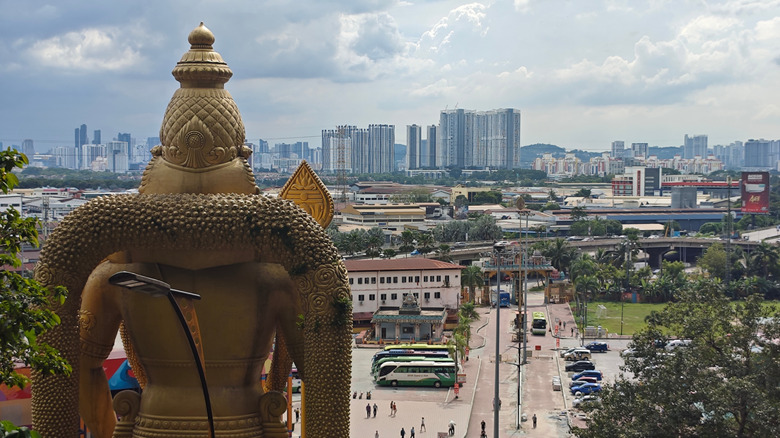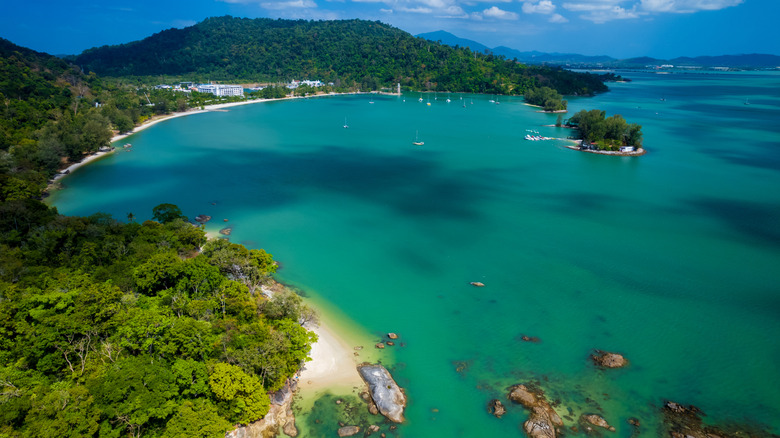For those who don’t get their sea legs, spending retirement years on a cruise ship is proving increasingly popular. Yet most of us eventually feel the desire to put down roots. In late 2024, Finland was named the best country in the world to retire. But the website We Buy Any Home (via Time Out) named Malaysia a close second.
The island-filled nation of nearly 36 million inhabitants boasts nearly 3,000 miles of coastline and a diverse culture. That diversity stems from a mix of native Malay people — also known as bumiputra — and families who immigrated from across Asia, including China, Sri Lanka, Pakistan, and India. It’s a melting pot that may feel familiar to Americans in some ways, but refreshingly different in many others. For example, you’ll find temples like Selangor’s unforgettable Batu Caves, not far from Kuala Lumpur’s international shopping and dining scene in the Bukit Bintang neighborhood.
Those looking to retire in Malaysia will be especially impressed with the low cost of living, excellent medical care and the relative ease of scoring a visa. The Malaysia My Second Home (MM2H) visa comes in three tiers, all of which allow settlers as young as 25 (hello, early retirees!) to stay for at least five years, with renewals available. That’s with the silver level. Gold allows for 15 years. Platinum, which requires the largest fixed deposit of a whopping $1 million, a property purchase of at least $1 million, not to mention a participation fee of roughly $47,000 offers the most flexibility. It even allows participants to work in Malaysia. If you’re less committed, there’s a renewable digital nomad visa that lets you stay in Malaysia for up to one year.
Where to retire in Malaysia
One of the beauties of Malaysia for Americans looking to retire to Asia is that English is widely spoken. According to Cudy Technologies, more than 70% of the population scores well or very well in their command of the language. As you’d expect, the larger the city, the more common it is.
That alone might be reason enough to consider settling in Kuala Lumpur, Malaysia’s capital of just over 2 million people. Per Expatistan, the cost of living for a single person in KL, as most people call it, is $1,121 per month. Few modern metropolises in the world are as inexpensive. KL also offers an appealing blend of skyscraping architecture, such as the second tallest building in the world, Merdeka 118, and decidedly low-tech businesses where you can grab a breakfast of flaky roti canai and curry sauces for cents on the dollar.
That’s the most expensive place in Malaysia to consider. Many expats instead choose the northwestern state of Penang. Penang Island is especially popular, particularly its capital, George Town, a UNESCO World Heritage site. On average, high-rise apartments in the state cost around $590 each month. Thinking of unwinding on a smaller island? Langkawi is a 50-minute flight away from Penang. With a population of fewer than 100,000 on the main island, you’ll see almost as many water buffalo in the rice fields as people.




